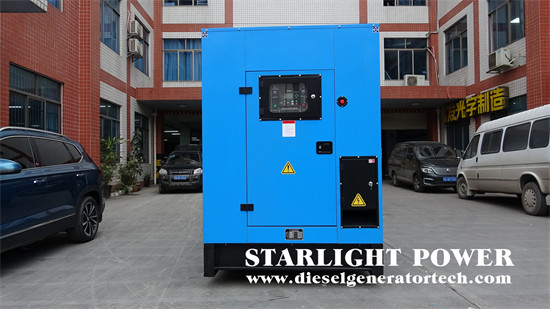The alternator valve type valve train consists of a valve group (valve, valve guide, valve seat and valve spring, etc.) and a valve drive group (push rod, arm, camshaft and timing gear, etc.): the intake and exhaust system is composed of air filter It is composed of air intake pipe, exhaust pipe and muffler.

There are many structural forms of the generator valve train, which can be divided into two forms according to the position of the valve relative to the cylinder: the valve arranged on the side of the cylinder is called a side valve valve train; the valve arranged on the top of the cylinder is called a top valve. Installed valve train. The combustion chamber arranged by the side-mounted valve valve mechanism has a large lateral area, the structure is not tight, and the surface height cannot be too small due to the limitation of airflow and valve movement. Therefore, when the compression ratio is greater than 7.5, it is difficult to arrange the combustion chamber. , For generators, since the compression ratio cannot be too low, the overhead valve valve train is widely used. According to the arrangement position of the camshaft, it can be divided into upper camshaft type, middle camshaft type and lower camshaft type; according to the transmission mode between the crankshaft and the camshaft, it can be divided into gear transmission type and chain transmission type; The number of valves in a cylinder can be divided into two-valve, three-valve, four-valve and five-valve mechanisms. This article mainly introduces the common valve trains of overhead valve, lower camshaft, gear transmission and two valves.
The overhead valve valve mechanism is composed of camshaft 15, tappet 14, push rod 13, valve rocker arm 10 and valve 3 and other parts. The intake and exhaust valves are arranged on the cylinder head, with the head of the valve facing down and the tail facing up. If the camshaft is close to the crankshaft for transmission convenience, the distance between the cam and the valve will be longer. In the middle, a series of parts such as tappets, push rods and finger arms can be used to open the valve, which makes the generator mechanism more complicated and the rigidity of the whole system is poor.
The working process of the overhead valve valve mechanism is as follows: the camshaft is driven by the crankshaft through gears. When the internal combustion engine is working, the camshaft rotates with the crankshaft. For a four-stroke internal combustion engine, the speed of the camshaft is 1/2 of the speed of the crankshaft. That is, two revolutions of the crankshaft complete a working cycle, and one revolution of the camshaft causes the intake and exhaust valves to open once each. When the alternator camshaft rotates, the raised portion comes into contact with the tappet, and the tappet begins to rise. The rocker arm is rotated around the rocker arm axis through the push rod 13 and the adjusting screw 12, and the valve is pressed down according to the other end of the arm to open the valve. When the valve is depressed, the inner and outer valve springs are also compressed. When the highest point of the protruding part of the camshaft of the generator turns over the tappet plane, the tappet and the push rod fall with the rotation of the cam and are compressed. The tight valve spring lifts the valve upward through the valve spring seat 6 and the valve lock plate 7, and finally presses it on the valve seat to close the valve. The valve spring has a certain preload during installation to ensure that the valve and the valve seat fit tightly without leaking.
As a professional diesel generator manufacturer, we always insist on using first-class talents to build a first-class enterprise, create first-class products, create first-class services, and strive to build a first-class domestic enterprise. If you would like to get more information welcome to contact us via [email protected].
Copyright © Guangxi Dingbo Generator Set Manufacturing Co., Ltd. All Rights Reserved | Sitemap
Update cookies preferences